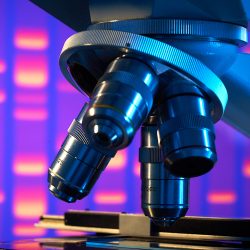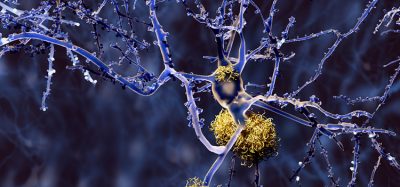NGS: offering a glimmer of hope in the fight against COVID-19
Posted: 11 September 2020 | Pushpanathan Muthuirulan (Harvard University) | No comments yet
Next-generation sequencing (NGS) has become the method of choice for many researchers responding to infectious disease outbreaks and in the present coronavirus pandemic. Here, Pushpanathan Muthuirulan discusses the potential of NGS for rapid diagnosis and explores some of the emerging high-throughput approaches using NGS as a readout for the detection of viral RNA sequences.


Abstract
The application of NGS technology has skyrocketed in recent years and is gaining increasing popularity from the scientific community. It is now becoming a mainstream option for most researchers in the fight against the viral pandemic. COVID-19, a respiratory disease caused by a novel coronavirus – SARS-CoV-2 – has rapidly swept across the world, infecting an enormous number of people. Early, rapid diagnosis is a key weapon in the battle against the virus. NGS has great potential for detecting the nucleic acid sequences of viruses and allows parallel sequencing of a large number of DNA fragments in a single assay with high accuracy and a fast turnround time. It can therefore be used to help ensure the accuracy of new COVID-19 diagnostics, as well as identify mutations and reveal the evolutionary history of SARS-CoV-2 by sequencing its genome. NGS also allows us to explore key molecular players in a range of infected patient samples that could aid our understanding of how the virus infects individuals and why some people get sick and others do not. Therefore, utilising NGS technologies in COVID-19 research will enable us to develop additional diagnostic tools, therapies and better understand the host response to viruses.
Introduction
Since the first reported case of COVID-19, the world has witnessed an unprecedented increase in the number of cases. The novel coronavirus causing this respiratory syndrome, SARS-CoV-2, has been identified and its whole genome was made available in a public database in early January 2020.1 Due to the fast spread and increasing number of COVID-19 cases, rapid and accurate detection of the virus is of growing importance to control the source of infection and prevent viral transmission.
The availability of the SARS-CoV-2 genome sequence has facilitated the rapid development of molecular diagnostic tools for COVID-19. Currently, most COVID-19 diagnoses rely on quantitative reverse transcription polymerase chain reaction (RT-PCR), which is low-throughput, laborious and often produces false-negative and false-positive results, making it overwhelmingly challenging to meet testing needs and standards even in industrialised nations.2


As the number of confirmed COVID-19 cases continues to rise across the globe, there have been widespread reports of supply shortages of reagents used to isolate the virus RNA and perform RT-PCR. This has resulted in a major bottleneck in many countries where the clinical labs are unable to deploy testing due to a shortage of testing reagents.3 As the early, rapid diagnosis of COVID-19 is critical for prevention and control of this pandemic,4 it is imperative a high-throughput, sensitive, fast and cost-effective testing strategy is used to help win the battle against the virus.
NGS technology has revolutionised the field of genomics, providing novel approaches to screen patient samples and detect pathogens.5 NGS platforms can be used to capture target DNA regions of the pathogen from infected individuals, followed by parallel sequencing of these regions in a single run with high accuracy and fast turnaround time. With a multitude of benefits, NGS is now becoming the gold standard method for clinical diagnosis and recent advancements are leading to new approaches that improve our knowledge about disease origin, occurrence and transmission.5
As NGS platforms are now cheaper, easier, faster and more reliable, most researchers choose NGS technology over other conventional methods to understand and respond to infectious disease outbreaks. In this pandemic scenario, it is critical that mass testing is performed to prevent the rapid spread of infection and minimise mortality rates. NGS-based diagnostic tests could overcome the limitations of timeliness, as well as accuracy, in detecting SARS-CoV-2. This would offer incredible opportunities for cost-effective, high-throughput diagnosis and enable rapid initiation of treatment to control the pandemic. Furthermore, NGS enables investigation of the mutational landscape of novel pathogens like SARS-CoV-2, which helps to determine the evolution of viruses and their potential consequences.6 This article focuses on the importance of utilising NGS technologies in COVID-19 research to expand the global diagnostic capacity and help our understanding of the disease pathogenesis, aiding the development of targeted therapeutic and preventive measures.
Population-scale COVID-19 testing – a key step in returning to normality


The ongoing global pandemic is causing significant loss of life and the exponential spread of SARS‑CoV-2 is likely to re-emerge once all restrictions are lifted. In response to the current situation, it is important that population-scale testing is implemented to analyse millions of samples each day and help break the cycle of isolation as well as prevent the rapid spread of SARS-CoV-2. Notably, NGS technologies are widely available and in use worldwide, including in research laboratories, clinics and commercial service providers. The following section describes some of the emerging high-throughput approaches using NGS as a readout for the detection of viral RNA sequences. Further improvement in these techniques could offer a potential solution to help fight the COVID-19 pandemic.
LAMP-Seq
Researchers are scrambling to find better ways to diagnose the novel coronavirus to limit the spread of disease and determine the pace at which restrictions can be lifted. LAMP-Seq, a barcoded reverse transcription loop-mediated isothermal amplification (RT-LAMP) protocol developed by Schmid-Burgk et al.,7 was reported to reduce the cost and complexity of population-scale testing. This method can be used as a surveillance test for large numbers of people in the community. In this approach, individual samples were processed in a single heat step and the resultant barcoded amplicons were shipped to a sequencing centre, pooled and analysed in groups. This approach enables rapid identification of all infected individuals in a single run and helps support epidemiological interventions in the affected areas. Using unique barcode combinations for each sample and multiplexing allows extensive pooling and significant reductions in cost. Given its low cost and scalability, LAMP-Seq can be efficiently used to analyse millions of samples per day using existing NGS platforms.
SwabSeq
Despite the rapid increase in COVID-19 testing capacity and the multiple challenges associated with deploying RT-qPCR tests, Bloom et al. have developed SwabSeq,8 a high-throughput testing platform for SARS-CoV-2 that uses NGS as a readout to detect viral RNA sequences from mid-nasal swabs and oral fluids. SwabSeq utilises unique molecular barcode combinations per sample, enabling thousands of samples to be multiplexed and simultaneously analysed for the presence or absence of SARS-CoV-2 in a single run. Additionally, SwabSeq uses in vitro RNA as a standard that mimics the viral amplicon, which could improve viral quantification, reduce the need for automation and sample-to-sample normalisation, enable reliable measurement and provide increased sensitivity for detecting true negatives. SwabSeq can be used to detect SARS‑CoV-2 from nasal and oral specimens with or without RNA extraction and maintains greater analytical sensitivity compared to conventional RT-PCR tests. SwabSeq is simple, readily scalable, sensitive and is a relatively cost-effective method for performing population-scale testing in a fast turnaround time of 12 to 24 hours.
Massively parallel diagnostic assays
Massively parallel diagnostic assays (MPDA), developed by Hossain et al.,9 use NGS to simultaneously sequence thousands of viral RNA measurements in a single run. The MPDA method has been reported to efficiently detect SARS-CoV-2 RNA in up to 19,200 patient samples per workflow. It combines RT, PCR and NGS for high-throughput diagnostic testing. The main novelties of this method are the labelling of patient samples with unique barcodes, the multiplexing of thousands of samples into a single PCR reaction, the application of NGS amplicon sequencing mode to measure thousands of variant cDNA levels and the rapid demultiplexing of the NGS output to deliver mass testing diagnostic results with patient‑specific internal controls. This approach has also extended to include multiple spike-in and RNA extraction controls that yield more accurate and quantitative diagnosis.
Unravelling the mutational landscape of SARS-CoV-2 using NGS
A more comprehensive understanding of the key molecular players that regulate the pathogenic mechanisms of SARS‑CoV-2 are essential for the development of targeted therapeutic and preventive measures to combat COVID-19”
In the past decade, several NGS approaches have been developed for viral whole-genome sequencing (WGS) and quasispecies studies to enhance diagnosis, disease control and prevention.10 Viruses, particularly RNA viruses, have the capability to evolve and mutate and the occurrence of low‑frequency variants or mutations in a genome is a self-protective mechanism of viruses that are evolutionarily protected to survive and rapidly respond to host immune selection pressure.4 Understanding the mutational landscape of any virus, including SARS-CoV-2, using NGS is highly important as it has potential implications for diagnosis, pathogenesis and vaccine design. The worldwide effort of scientists to sequence the full genome of SARS-CoV-2 and the availability of a large number of fully-sequenced genomes has provided a unique opportunity for researchers to understand the short-term temporal evolution of this virus in humans.11 Furthermore, phylogenetic analysis has revealed mutation hotspots in the SARS-CoV-2 genome and identified variants that help in the classification of SARS‑CoV-2 based on evolutionary lineages with unique co-occurring mutations and geographic distribution.11 Thus, the application of NGS to unravel the mutational landscape in viral quasispecies, particularly via comparative studies, could help us understand viral genome diversity, hypothesise suitable targets for new vaccine development and drug repositioning and help with the development of prevention strategies.
Understanding the pathogenic mechanism of SARS-CoV-2 for potential therapies
NGS is currently evolving as a surveillance tool for COVID-19, enabling highthroughput detection of coronaviruses from clinical samples”
To develop an efficient drug or vaccine against COVID-19, detailed information about the pathogenic mechanism of SARS-CoV-2 at the cellular and molecular level is urgently needed. The ability of NGS to detect subtle changes in gene expression could help researchers understand the expression changes that occur in the host cells as a result of viral infection at both the bulk and single‑cell level. In addition, sequencing the full-length transcripts would enable cell‑type identification and provide information on quantitative changes in splice-isoform ratios, single‑nucleotide polymorphisms (SNPs) or splice variants that can help us better understand the host response to the viral infection.12 Several elements relating to the pathogenesis of SARS‑CoV-2 are still poorly understood and require further investigation. A more comprehensive understanding of the key molecular players that regulate the pathogenic mechanisms of SARS-CoV-2 are essential for the development of targeted therapeutic and preventive measures to combat COVID-19. In this respect, it is important to emphasise that in the present state, where no specific drug or vaccine is available for COVID-19, research that unravels the molecular mechanism of SARS-CoV-2 is crucial to identify a potential therapy.
Conclusion
In conclusion, NGS is currently evolving as a surveillance tool for COVID-19, enabling high‑throughput detection of coronaviruses from clinical samples. It also aids our understanding of the evolution and pathogenic mechanisms of SARS-CoV-2, leading us towards the development of a novel therapy to fight the virus. As NGS is now becoming the method of choice for many researchers responding to infectious disease outbreaks, this may help us develop better strategies that can potentially be applied not just to the fight against COVID-19, but to any future viral outbreak.
About the author
Dr Pushpanathan Muthuirulan is currently a Research Associate at Harvard University studying the developmental and genetic basis of human height variations using functional genomics approaches. Previously, he worked as a Postdoctoral Researcher at the National Institutes of Health, where his research focused on developing state-ofthe- art technologies using CRISPR-Cas9 and super‑resolution microscopy to map neural circuits that involves visual motion information processing in Drosophila. His expertise lies in omics technologies, drug discovery, neuroscience and developmental and evolutionary genetics.
References
- Wu, F., Zhao, S., Yu, B., Chen, Y. M., Wang, W., Song, Z. G, et al. (2020). A new coronavirus associated with human respiratory disease in China. Nature, 579(7798), 265-269.
- Tahamtan, A., & Ardebili, A. (2020). Real-time RT-PCR in COVID-19 detection: issues affecting the results. Expert Review of Molecular Diagnostics, 20:5, 453-454, DOI: 10.1080/14737159.2020.1757437
- Esbin, M. N., Whitney, O. N., Chong, S., Maurer, A., Darzacq, X., & Tjian, R. (2020). Overcoming the bottleneck to widespread testing: A rapid review of nucleic acid testing approaches for COVID-19 detection.RNA, rna-076232.
- Christdas, J., & Pushpanathan, M. (2020). COVID-19 Prophylaxis: The Desperate Need for Mankind.J Pure Appl Microbiol, 14(suppl 1), 695-698.
- Muthuirulan, P., & Sharma, P. (2017). NGS: empowering infectious disease research beyond reality.Drug Target Review, 4(3), 45-50.
- Forster, P., Forster, L., Renfrew, C., & Forster, M. (2020). Phylogenetic network analysis of SARS-CoV-2 genomes. Proceedings of the National Academy of Sciences, 117(17), 9241-9243.
- Schmid-Burgk, J. L., Li, D., Feldman, D., Slabicki, M., Borrajo, J., Strecker, J., … & Zhang, F. (2020). LAMP-Seq: Population-scale COVID-19 diagnostics using a compressed barcode space.bioRxiv. doi: https://doi.org/10.1101/2020.04.06.025635
- Bloom, J. S., Jones, E. M., Gasperini, M., Lubock, N. B., Sathe, L., Munugala, C., … & Lin, I. (2020). Swab-Seq: A high-throughput platform for massively scaled up SARS-CoV-2 testing. medRxiv. doi: https://doi.org/10.1101/2020.08.04.20167874
- Hossain, S. A., Reis, A. C., & Salis, H. M. (2020). A massively parallel COVID-19 diagnostic assay for simultaneous testing of 19200 patient samples.Google Docs, Mar.
- Houldcroft, C. J., Beale, M. A., & Breuer, J. (2017). Clinical and biological insights from viral genome sequencing.Nature Reviews Microbiology, 15(3), 183-192.
- Lu, I. N., Muller, C. P., & He, F. Q. (2020). Applying next-generation sequencing to unravel the mutational landscape in viral quasispecies: A mini-review. Virus research, 197963.
- Blanco-Melo, D., Nilsson-Payant, B. E., Liu, W. C., Uhl, S., Hoagland, D., Møller, R., … & Wang, T. T. (2020). Imbalanced host response to SARS-CoV-2 drives development of COVID-19. Cell. 181(5), 1036-1045.e9
Related topics
Analytical Techniques, Disease Research, Genomics, Next-Generation Sequencing (NGS), RNAs, Screening
Related conditions
Coronavirus, Covid-19
Related organisations
Takara








